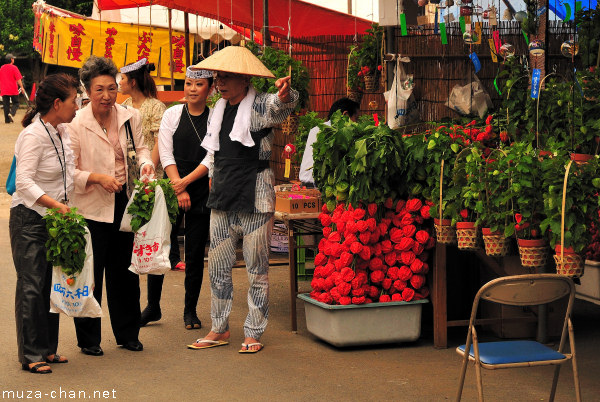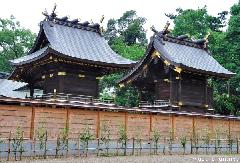Hozuki, the “Chinese Lantern” plant, was cultivated in Japan ever since the Edo period as a medicinal plant, believed to relieve fever and ease the discomfort felt by pregnant women. The belief originates in a 200 years old story that took place in the Seisho-ji Temple from Shiba (Minato-ku, Tokyo):
One day during the Meiwa era, a worker found a pot of Hozuki while working in the temple’s garden. Then, he remembered that the night before he dreamed about Atago Gongen, the avatar of Bodhisattva Jizo. Inspired by the dream, he announced that by eating the fruits of Hozuki at the Atago Shrine on June 24, one could be relieved from health problems.
June 24 is a traditional festival day for Jizo, so some people followed his advice, declaring afterwards that the plant was really helpful… The story spread, so a Chinese Lantern plant fair (Hozuki Ichi), started taking place every year at the Seisho-ji Temple.
After a while, another Hozuki Ichi began at the Senso-ji Temple in Asakusa, on July 9 and 10 (during the Yonman-rokusennichi - the Day of 46,000 Blessings), in time surpassing the fame of the original fair from Shiba and attracting today hundreds of thousands of visitors each year…
EXIF Info:
|
Yesterday’s Japan Photo:Japanese Traditional Architecture, Chigi and Katsuogi |



